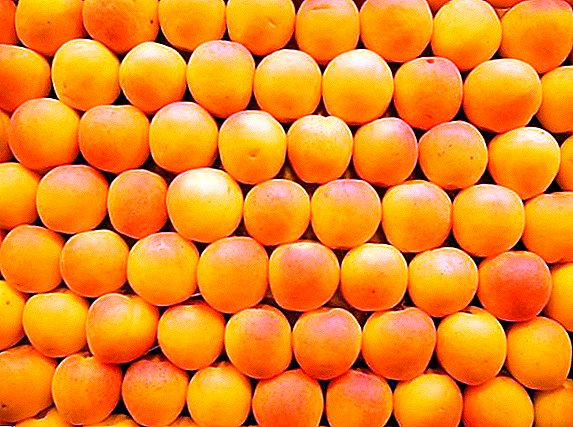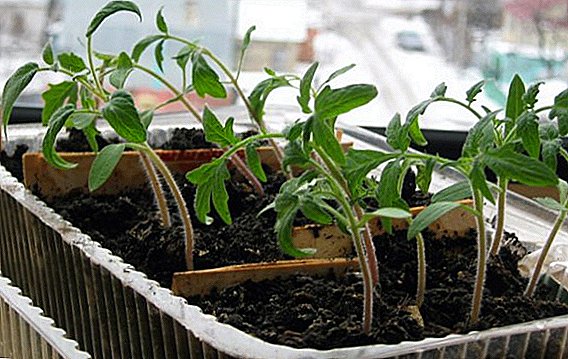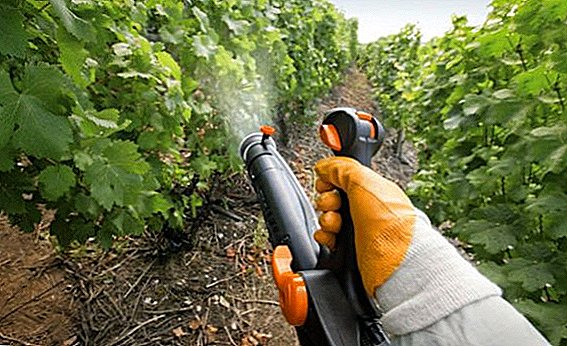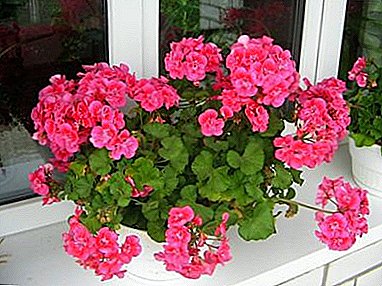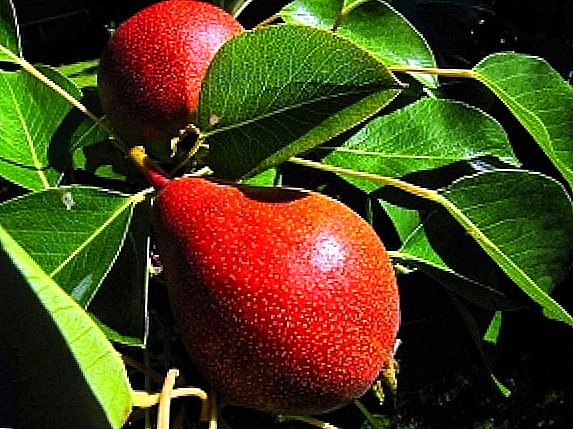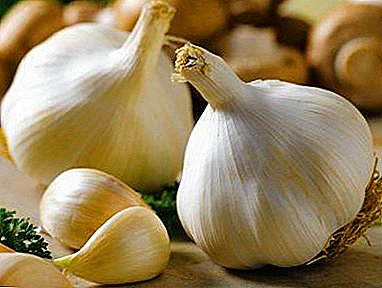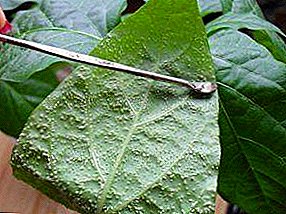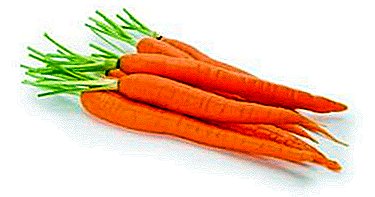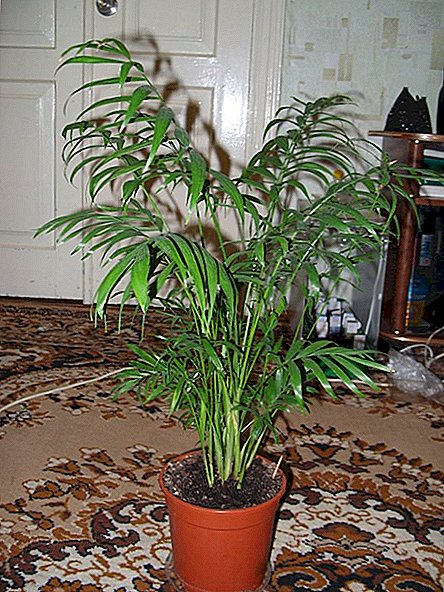 Hamedorea (often referred to as reed or bamboo palm) is attractive for indoor breeding not only for its decorative properties, unpretentiousness and ease of care. This exotic palm is popular because of its beneficial qualities - it heals, absorbs substances harmful to the body. Propagate it most often with the help of processes. But this does not mean that Hamedorea does not germinate from seeds. It is possible to grow a palm tree with the seed method at the lowest possible cost - for this it is simply necessary to create appropriate conditions and wait a bit.
Hamedorea (often referred to as reed or bamboo palm) is attractive for indoor breeding not only for its decorative properties, unpretentiousness and ease of care. This exotic palm is popular because of its beneficial qualities - it heals, absorbs substances harmful to the body. Propagate it most often with the help of processes. But this does not mean that Hamedorea does not germinate from seeds. It is possible to grow a palm tree with the seed method at the lowest possible cost - for this it is simply necessary to create appropriate conditions and wait a bit.
Did you know? Hamedorea (Chamaedorea) has more than 130 types of slow-growing low-growing palm trees. Location in nature - the mountains of Latin America (reach a three-meter height). Some types of Hamedorei (high, elegant, cascade, monochrome, Arenberg, etc.) perfectly adapted to indoor conditions and became popular in home floriculture. They differ in a small size (max. Up to 1.3 m), feather-like decorative leaves with evenly spaced plates.
What to look for when buying seeds
The first necessary step is to obtain the seeds of Hamedorei. There are two ways:
- buy seeds in specialized stores;
- get them yourself.
Important! You should not buy Hamedorei seeds, which are already 11-12 months old or more, they will not germinate.
 In the second case, it is possible to get fresh seeds, but there are difficulties: all Hamedorei dioecious, you must already have at least one female and one male plant. In room conditions it is necessary to carry out artificial pollination (using a brush). If successful, the seeds will be tied-berries. Seed collection is carried out after they fall to the ground itself (a sign of maturity).
In the second case, it is possible to get fresh seeds, but there are difficulties: all Hamedorei dioecious, you must already have at least one female and one male plant. In room conditions it is necessary to carry out artificial pollination (using a brush). If successful, the seeds will be tied-berries. Seed collection is carried out after they fall to the ground itself (a sign of maturity).
In order for Hamedorea to be able to successfully multiply with the help of seeds, it is necessary to step through the process of their preparation, seeding and germination.
Did you know? Hamedorei able to bloom abundantly at home. Male plants bloom inflorescences (paniculate or spike-shaped) from small fragrant yellow (sometimes red) flowers. Female palms give more thinned flowers of orange or yellow color. When the ovary is formed round berries (from 5 mm to 20 mm) black, red or yellow.
Seed preparation before planting
 If the seeds were purchased at the store, they should be prepared for sowing - subjected to special treatment (recall that there are no guarantees that the collection time for seeds is correct and the probability of their emergence will be high). Preparation is reduced to soaking - the seeds are soaked for two to five days in clean, soft (rain) water (you need to try to make it so that it remains warm all the time), as well as in the water:
If the seeds were purchased at the store, they should be prepared for sowing - subjected to special treatment (recall that there are no guarantees that the collection time for seeds is correct and the probability of their emergence will be high). Preparation is reduced to soaking - the seeds are soaked for two to five days in clean, soft (rain) water (you need to try to make it so that it remains warm all the time), as well as in the water:
- with the addition of special preparations to improve germination;
- with the addition of a few drops of iodine.
To speed up germination, each seed is filed from one edge (with a file, needle file, sharpening stone, etc.).
The composition of the soil for sowing seeds of palm trees
In order for Hamedorei seeds to germinate better, they are recommended to be sown not in the ground, but in specially prepared substrate. Most often prepared mixtures:
- from moss, pre-steamed sawdust and quartz sand (in equal proportions). For the prevention of putrefactive processes, crushed charcoal is added to the mixture;
- from quartz sand, sawdust, sod land and moss (in equal parts).
Did you know? Hamedorea palm tree perfectly purifies the air in the room from carbon dioxide, solid metals, formaldehydes, trichlorethylene and other harmful substances - absorbs them with leaves and roots; increases the vitality of the inhabitants of the apartment, promotes concentration, calms.
Planting prepared seeds in containers
 Hamedorea is sown on the surface of the substrate: depth of sowing of seeds is small - from 1 to 2 cm. Seeds are laid by the cut part in a wet substrate. Sprinkle on top of the soil is not necessary. Disposable plastic cups (with drainage holes), pots, or flat containers are used for disembarkation. After sowing, it is necessary to provide seeds with greenhouse conditions (warm and 100% moisture). To do this, cover the container with seeds with glass or film, put on a transparent bag. When germinating seeds in the cold season, the capacity for sowing seeds of palm trees can be placed on the heating battery.
Hamedorea is sown on the surface of the substrate: depth of sowing of seeds is small - from 1 to 2 cm. Seeds are laid by the cut part in a wet substrate. Sprinkle on top of the soil is not necessary. Disposable plastic cups (with drainage holes), pots, or flat containers are used for disembarkation. After sowing, it is necessary to provide seeds with greenhouse conditions (warm and 100% moisture). To do this, cover the container with seeds with glass or film, put on a transparent bag. When germinating seeds in the cold season, the capacity for sowing seeds of palm trees can be placed on the heating battery.
Conditions for seed germination
The best time for seed germination of Hamedorei palm is spring. If the seeds are fresh (obtained independently), there is no need to wait for it. Such seeds should be planted as soon as possible and not wait until they age. Hamedorea does not require that the lighting for seed germination be any special. Prerequisites are:
- stable heat. The temperature range on the ground should be from +28 to +30 ° C;
- Fresh air. Periodically it is necessary to open the greenhouse to ventilate, evaporate condensate from the walls, to prevent rotting;
- optimal watering (seeds can die from overdried and waterlogged substrate).
 During the picking, it is very easy to damage the young roots, the junction of the kidney with the endosperm, so everything should be done very carefully. For seedlings, babies are better to use small containers (diameter should not exceed 7 cm). The soil for young palms differs in composition from the previous substrate. She represents a mixture of turf land, quartz sand, leaf earth and humus in a ratio of 2: 2: 1: 1 (we must not forget about the drainage!). It is quite suitable ready-made shop mix "Palma".
During the picking, it is very easy to damage the young roots, the junction of the kidney with the endosperm, so everything should be done very carefully. For seedlings, babies are better to use small containers (diameter should not exceed 7 cm). The soil for young palms differs in composition from the previous substrate. She represents a mixture of turf land, quartz sand, leaf earth and humus in a ratio of 2: 2: 1: 1 (we must not forget about the drainage!). It is quite suitable ready-made shop mix "Palma".
Sprouted seed with a binder in the ground does not deepen, and placed on the surface. After completion of the pick, shoots should be watered. Young shoots need good lighting (direct sunlight is contraindicated). Experienced growers recommend making a light square frame from a wire, wrapping it with a translucent film, covering them with shoots and using it at the same time as sun protection and as a homemade greenhouse.
Care and transplantation of young palm trees
Hamedorea is very unpretentious, and easy care is on the shoulder even for an inexperienced amateur grower. The plant withstands drought and excess moisture. But if you want hamedorea to be pleased with its beauty, it is better to follow simple rules.
The first condition is to water properly. In hot weather, the frequency of watering should be 2-3 times a week, plus daily spraying with soft water. In winter, you need to water less often, stop spraying. A sign of the need for watering - drying the top layer of the substrate. To maintain humidity, pour water into flat containers and leave it in the room.
The second condition is to feed properly. Palm trees are fed in the summer and autumn, twice a month. The best and easiest way to feed the liquid fertilizer "Palm".

The third rule is to give the plant a rest in winter. In winter, the temperature for Hamedorei should be reduced to +18 ° C, it is necessary to stop feeding.
Adult palm trees should not be transplanted often (only when the roots have completely filled the container - usually every 3-4 years), whereas young Hamedorei need to be transplanted every year. The reasons for transplanting are:
- complete filling of the pot with roots;
- fungal diseases.
Important! When using a very large pot for growing Hamedorei palm trees, the root system will not be able to cope with the volume, the soil will begin to sour, the plant will hurt (fungi, root rot, etc.). Several times a month, the pot must be turned 180 degrees to preserve the symmetry of the crown.
Palm tree transplantation is best in the spring (May). Step-by-step instructions on how to transplant hamedorea:
- Place pebbles and expanded clay in the prepared pot, create drainage.
- Put a layer of soil mixture on the ready drainage (one third of the pot).
- Moisten the soil in the old pot and gently remove Hamedorei (the stems must be maintained).
- Remove the old soil (shake off the roots), rinse in warm water. Palm tree put in a new pot and, holding, straighten the roots, fill the ground. When transplanting in the fall or winter, it is better not to touch the earthen room, to transplant with it (using the transshipment method).
- The substrate in the new pot can be gently pressed and filled up with a new one. After transplanting, the pot should be placed in a shade.



Important! Reed palm will look more decorative if you plant several young shoots of Hamedorei in one pot.


